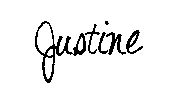Last year when I visited France I brought back a couple of Burdastyle magazines. They had some great summer fashions and I decided to make a beach tunic this week.When I opened up the large folded section which contained all the patterns, I was confronted with about a 3 yard square of what looked like so many random diagrams and lines that my head started to spin! It probably didn't help that all the directions were in French. Although I like to think I can carry on an OK conversation in French, reading sewing directions is another story.
Burdastyle Magazine Pattern 102, June 2010.
I examined the small drawing of the tunic I wanted to make for the pattern numbers so I could look for them on the sheet. The numbers were 21 and 22. "Easy enough." I thought, until I found several diagrams repeated with the same numbers all over the big paper. "Well why would they use the same numbers on different patterns?" I thought, "Just to confuse me more? That is so French!"
Actually the magazine is written in Germany and it was just a French translation...
It turns out that in the sewing directions there is a tiny box next to each pattern drawing that tells you where on the pattern map you can find your pattern. It's exactly like reading a map. Each square section of the big, two sided paper has a letter, and the box tells you what letter to find your pattern in and what color your pattern will be outlined in.
My pattern pieces could be found in section A and would be outlined in green. ( vert )
So that was the method to the madness!
But it wasn't done yet!
You have to trace the pattern. I used butcher block paper with a self healing mat underneath it and traced the patterns with my spiked pattern wheel. I then sketched over the little dots left by the wheel with my pencil.
But wait, there is still more! You didn't think they would make it that easy, did you?
I still had to add seam allowances. They do make you work for these patterns, don't they?
This project had better turn out well! I thought. You will have to tune back in a couple days to see the photos...
In conclusion, I decided there had to be an easier way to trace the patterns and found some pattern tracing fabric pictured below at Nancys Notions. It's non woven, like interfacing. You place it on top of your pattern and trace it with this little pen wheel sold with it. You can baste the material to check for fit before you cut your main fabric. Then you can take out the basting thread, iron it and use it as a pattern.
Neat, isn't it? it's washable and reusable.
This is also perfect for tracing my vintage patterns which I don't want to cut into.
Pattern tracing material from Nancy's Notions








Don't worry I am French and I find it very difficult to translate Burda's explanation in something that makes sense.
ReplyDeleteDon't hesitate to ask me for some help : mnlafosse@orange.fr
Hi, they do print an English language version as I subscribe to it here in the United Kingdom. It was quite tricky to get the subscription information but I love the patterns so much it was worth the effort! Can't wait to see your finished garment. :)
ReplyDeleteWow that is insane. lol i don't know if i could have made any sense of that!
ReplyDeleteYou have just sold me on the pattern making fabric. Japanese patterns are just as frightening and a three step program- so long when you just want to sew.
ReplyDeleteAh, don't worry about their instructions. They stink in every language I think! :D I almost never use them.
ReplyDeleteI HATE tracing the new issues ('10 and newer). Previous years were not nearly as bad, although I didn't know it then. Going back and tracing an issue from '08 is practically a vacation!
I just brought home 4 old copies from the library. There's so many things I want to make from them, but the pattern page frightens me! This makes me feel a bit better. :)
ReplyDelete